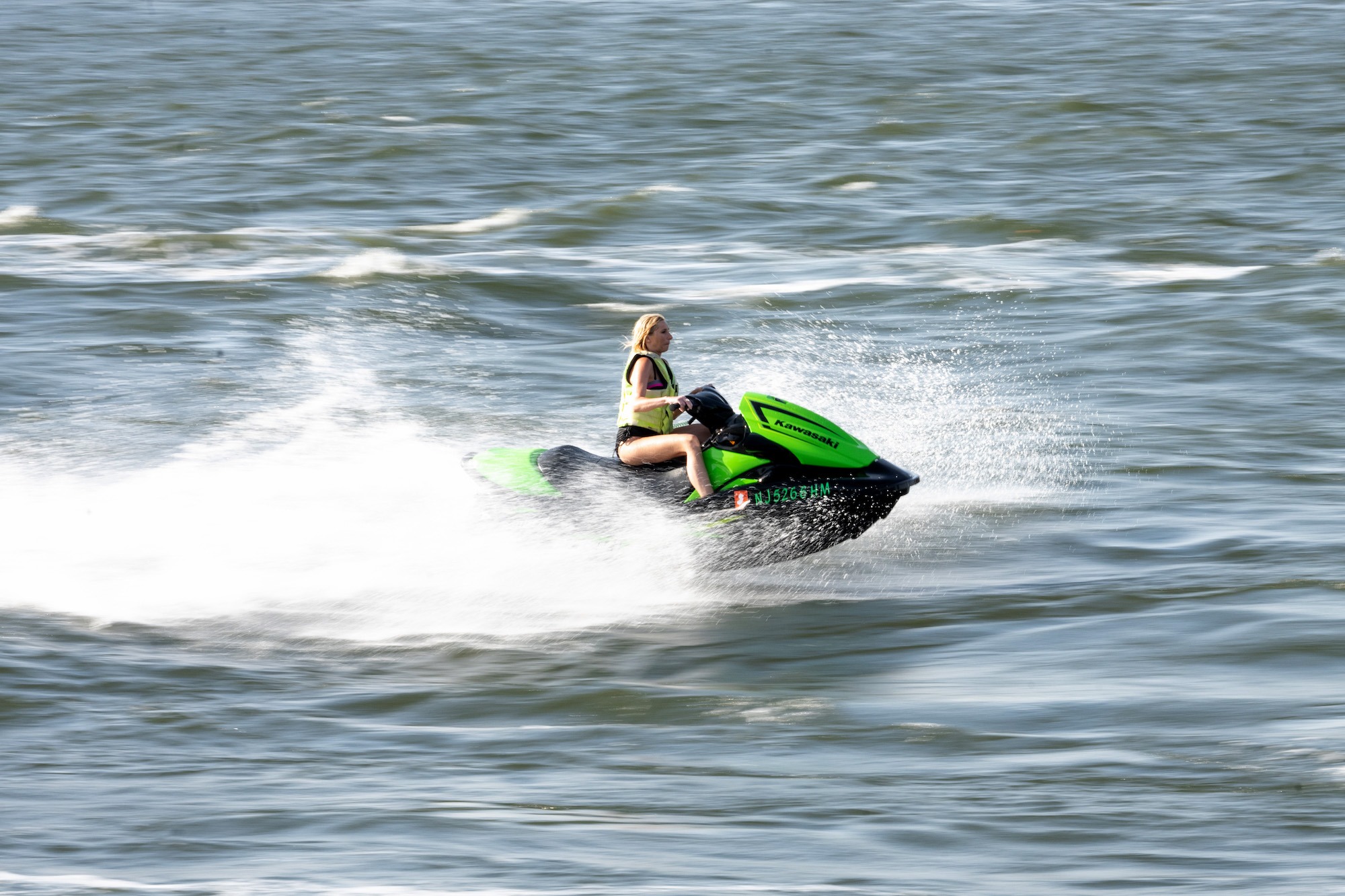A jet ski is a fun and thrilling way to experience the outdoors while also being less expensive and simpler to operate than a recreational boat. Personal watercraft are therefore ideal for anyone visiting a beach or living close to a body of water. But be careful since a jet ski may be just as deadly as any automobile.
Jet Ski Accident Statistics
Each year, hundreds of watersports-related fatalities and accidents are brought on by jet skis. The absence of a boat’s protective shell around the rider, operator inattention or lack of expertise, riding at high speeds, and a lack of training are some of the contributing factors.
A 2021 National Safe Boating Council information sheet lists alcohol, operator inattention, excessive speed, incorrect outlook, and operator inexperience as the top five key contributing causes in recreational boating accidents. The information sheet also reveals that in 2019, the most recent year for which data is available, the Coast Guard reported 4,168 incidents totaling around $55 million in property damage, 613 fatalities, and 2,559 injuries as a consequence of PWC accidents.
With 5.2 deaths per 100,000 registered vessels, this mortality rate reflects a 1.9% drop from the average of 5.3 deaths per 100,000 registered recreational vessels in 2018.
Most Dangerous Things You Should Never Do On A Jet Ski

Get Caught In A Storm
The weather is among the most terrifying circumstances on open sea. So it’s wise to check the weather before getting on a jet ski. To receive the most recent advisories for your area, tune in to the National Weather Service. Remember that even though you can see most storms coming, occasionally one will appear out of nowhere.
It’s also a good idea to keep an eye on the horizon; if you notice any dark, obnoxious clouds, turn around and return to land. The reason is because storms may produce high waves and rough water, which make riding challenging, as well as potentially lethal lightning.
Flip Or Fall Off
The majority of jet ski models feature a label on the rear that instructs you what to do if they capsize because overturning while operating one is typical. By keeping an eye out for waves, avoiding sudden movements, and limiting your speed, you may prevent a jet ski from flipping. If you don’t want to fall off, you should also be aware of the terrain all around you and refrain from riding a jet ski at peak speed.
Even while it may be difficult to change the circumstances that lead to an accident, there are steps you can take to decrease the effects of a fall. These include falling appropriately, slowing down, using protective gear, and avoiding choppy and shallow water.
Break The Law
It’s interesting to note that there are the same number of safety regulations for land and for water. Following these guidelines is essential to guaranteeing an incident-free, secure, and quiet jet ski session. Keep in mind that these rules prioritize your and others’ safety. The fundamental ones include obtaining the required licenses, abstaining from speeding in no-wake zones, abiding by the permitted locations and hours to ride, abstaining from driving after drinking, and donning the appropriate safety gear.
Underestimate How Long It Takes To Stop The Jet Ski
First of all, be aware that personal watercraft do not instantly stop. Not knowing how long it takes to stop your ski might hurt you and other people as well as harm the equipment. Therefore, if you’re new to jet skiing, it’s a good idea to practice stopping in a wide-open region where you won’t risk yourself or others. That implies that it will require practice to learn how quickly you can transition from full power to a complete halt.
Ride Too Close To Or Cut Off Other Watercraft
When operating a jet ski, the possibility of colliding with another watercraft exists at all times. Similar to traffic regulations, watercraft regulations are subject to your knowledge. The best course of action is to steer clear of other boats as much as you can, and always keep in mind that sailboats have the right-of-way.
Injuring Yourself
Jet skis are designed to be as safe as possible, yet accidents do happen, just like they do with any human-operated recreational vehicle. Here are some of the typical injuries sustained by jet ski riders, broken down by body area, along with prevention tips.
– Eye
There are several dangers to your eyes when you are moving at 70 mph. At those speeds, flying insects, leaves, or any other kind of material will hurt quite a bit. If you fall off the jet ski, there is also a chance that you may land on your face. Any of these dangers can result in contusions, corneal scratches, or in the worst cases, eyesight loss.
You should always use goggles or floating sunglasses when riding a jet ski. Choose a pair that feels comfortable and fits nicely. But always keep in mind that fashion or comfort come last when it comes to your eyes.
– Legs And Arms
While operating a jet ski, there are several possibilities to harm your arms and legs. Falling off the ski causes the most visible injury, however using improper driving methods can also result in limb harm.
– Neck And Head
A concussion from hitting the water too forcefully is the most visible head injury, but concussions can also occur from other causes. A simple turn might force you to run into someone if you are riding with someone else. Knowing your passengers’ experience and skill level is just as crucial. Make sure your pace and violence are acceptable to everyone on the jet ski.
When you fall off the skis, you also run the risk of breaking your neck. Body parts may be pushed in different ways as you contact the water. Your neck is thinner and lighter than your head. Consequently, the neck is forced to twist and turn when the head enters the water at a different time or angle than the body. It may result in neck injury. Less worrisome are muscle rips or pulls. Disk ruptures are possible. Additionally, there is a chance of fracture, as demonstrated below.
We are examining the mid-cervical level in the CT image that is shown below (neck). You’re looking at a side or head-to-toe cut of the object. Because this image is off-center, it does not resemble the illustrations on book spines. The left joint plate of the sixth neck vertebra (C6), which links to the fifth, has a fracture, as indicated by the red arrow. The typical joint between C4 and C5 is indicated by the yellow arrows, which also illustrate how C5 has pushed forward from C6.
The tiny ligaments that hold things in place are damaged when there is a fracture and movement of the bones. This can be observed on an MRI, but it is not frequently performed because we can already see there is damage from the fracture. By the way, this patient will recover nicely with just a neck collar for 4-6 weeks. However, there is a chance of more severe injuries.
Running Out Of Gas
Jet skis require gas to operate, so just like with your automobile, you must be mindful of how much you are using or you may get into problems. Most jet skis have a 16-gallon tank, and if ridden actively, they will burn 12″14 gallons per hour, giving you 75″90 minutes of enjoyment.
However, there may be times when you’ll find yourself using every last drop of gas you have, such as when you become lost.
Frequently Asked Questions
Should I Wear A Helmet On A Jet Ski?
If you want to perform a lot of wake jumping and crazy donuts, wearing a water helmet could be a good idea. It may only serve to protect you because concussions are among the most frequent injuries sustained when operating a jet ski.
Does Falling Off Jet Skis Hurt?
If you fall off your jet ski while traveling at a speed more than 30 mph, it will likely hurt. You won’t fall off easily, though, as long as you don’t make any big wakes or sudden turns when traveling at such speeds. Because you’ll be performing doughnuts or whiplashes most of the time when you fall off a jet ski, you won’t be traveling much faster than 15 mph. However, it still has the potential to damage and injure, particularly if passengers fall on top of one another.
What Happens If A Jet Ski Flips Over?
You may force a jet ski to flip back over by placing weight on one of its sides. There is often no issue flipping them because they are designed to be flipped. It could be difficult to flip it back over if you are the only one using it.



